Elon Musk ‘bans safety gear because he hates bright colors’ – as workplace accidents leading to AMPUTATIONS rise at his SpaceX facility
SpaceX employees claim that founder Elon Musk takes a lax approach to safety and has even discouraged the use of yellow-colored safety gear, citing his aversion to bright colors.
Three former supervisors at SpaceX explained how Musk even had machines painted in industrial safety yellow and repainted black or blue based on his aesthetic preferences.
Some workers were also reportedly instructed not to wear yellow safety vests when Musk was present.
Managers also sometimes told employees to replace the yellow security tape with red, supervisors said.
An investigation by Reuters revealed that SpaceX had at least 600 unreported employee injuries since 2014, including eight incidents that led to amputations.
Elon Musk discouraged employees from wearing yellow-colored safety gear, SpaceX employees say
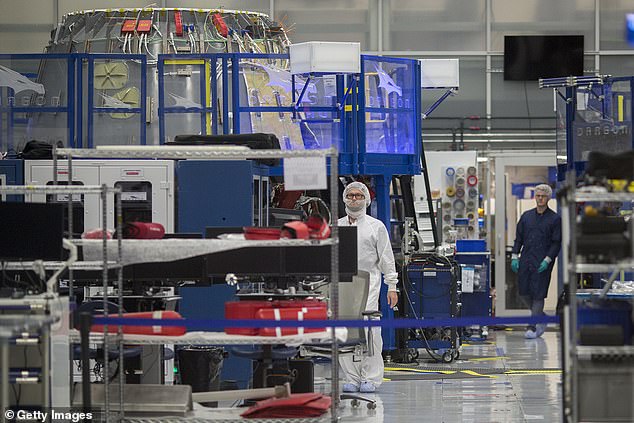
Musk doesn’t like bright colors and has even had yellow machines painted black or blue, while yellow security tape has been replaced with red. Pictured, inside of SpaceX in Hawthorne, California
Musk himself sometimes seemed cavalier about safety during visits to SpaceX sites, with four employees saying he sometimes played with a new flamethrower.
For years, Musk and his deputies found it “hilarious” to wave the flamethrower, fire it near other people and giggle “like they were in high school,” an engineer said.
Musk tweeted in 2018 that the flamethrower is “guaranteed to liven up any party!” At SpaceX, Musk played with the device in small office environments, said the engineer, who at one point feared Musk might set someone’s hair on fire.
Last year, an open letter from some SpaceX employees criticized Musk’s behavior as a “source of distraction and shame.”
Musk is known for running his companies with a high degree of intensity, occasionally implementing work sprints and reportedly sleeping on Tesla’s factory floor.
During an incident at Musk’s SpaceX facility in McGregor, Texas, Lonnie LeBlanc and his colleagues realized they had a problem.
They had to transport foam insulation to the rocket company’s main hangar, but had no straps to secure the payload.
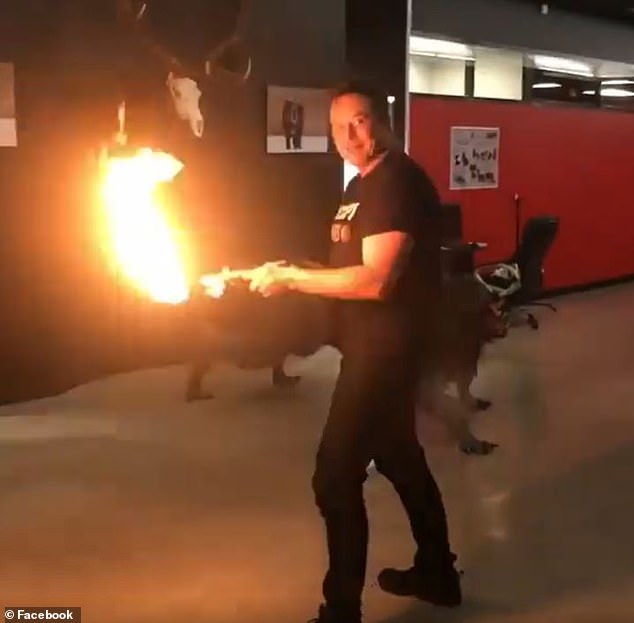
Musk himself sometimes seemed arrogant about safety during visits to SpaceX sites: four employees said he sometimes played with a new flamethrower
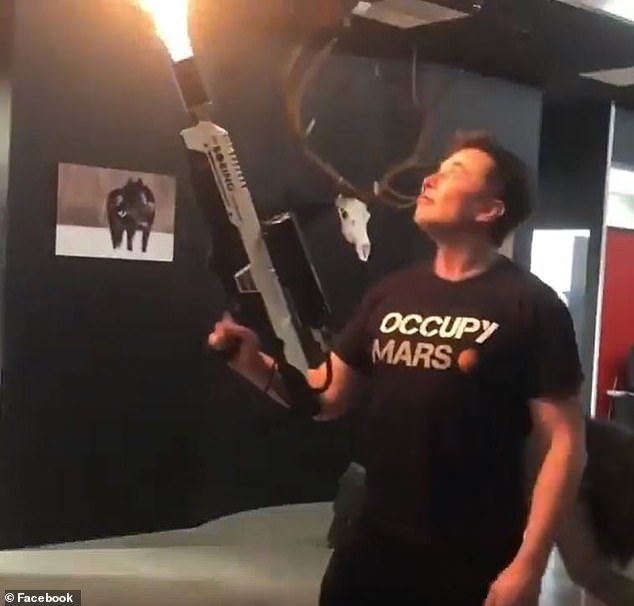
Videos posted online show it can shoot a thick flame more than five feet long. Musk played with the device in small office environments, said the engineer, who at one point feared Musk might set someone’s hair on fire
LeBlanc, a relatively new employee, offered a solution to hold the load: he sat on it.
After the truck drove away, a gust of wind blew LeBlanc and the insulation off the trailer, causing him to hit his head on the pavement.
LeBlanc, 38, who had retired from the U.S. Marine Corps nine months earlier. He was pronounced dead at the scene from head trauma.
Federal inspectors from the U.S. Occupational Safety and Health Administration (OSHA) later determined that SpaceX had failed to protect LeBlanc from an obvious danger, noting the seriousness and seriousness of the violation.
LeBlanc’s colleagues told OSHA that SpaceX did not have easy access to fasteners and had no process or oversight for handling such payloads. SpaceX acknowledged the problems and the agency ordered the company to make seven specific safety improvements, including more training and equipment, the inspection report said.
Many of the 600 documented injuries over the past nine years were serious or disabling.
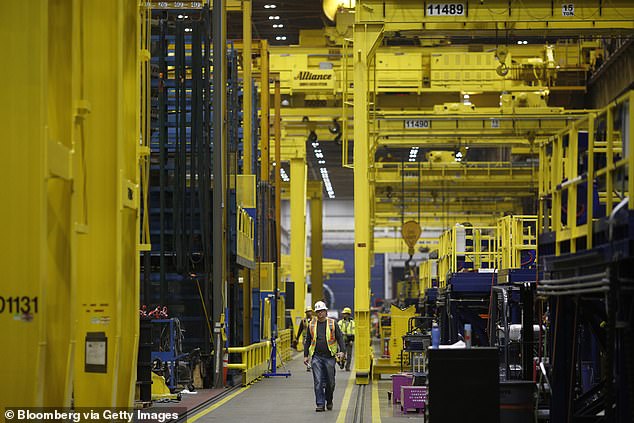
All machines that were painted safety yellow, such as at this GE power plant, were painted blue or black at SpaceX
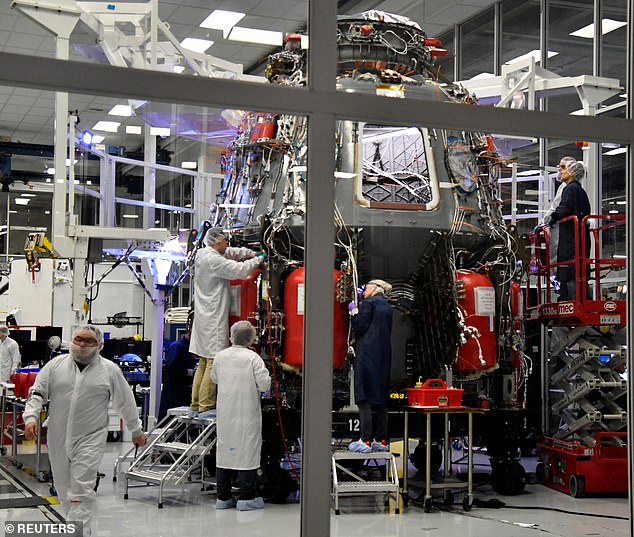
SpaceX engineers work on the Crew Dragon Demo-2 craft at SpaceX Headquarters in Hawthorne, California. There is virtually nothing painted yellow in sight
The data includes reports of more than 100 workers suffering cuts or lacerations, 29 with broken bones or dislocations, 17 whose hands or fingers were “crushed,” and nine with head injuries, including one skull fracture, four concussions and one traumatic brain injury.
The cases also included five burns, five electrocutions, eight accidents resulting in amputations, 12 injuries involving multiple unspecified body parts, and seven workers with eye injuries.
Others were relatively minor, including more than 170 reports of strains or sprains.
The more than 600 SpaceX injuries represent only a portion of the total number of cases.
OSHA has required companies to report their total number of injuries annually since 2016, but SpaceX facilities have not filed reports for most of those years.
The more than 600 injuries were calculated by examining court documents in workers’ comp lawsuits, workers’ comp medical records, state workers’ compensation claims and emergency call records.
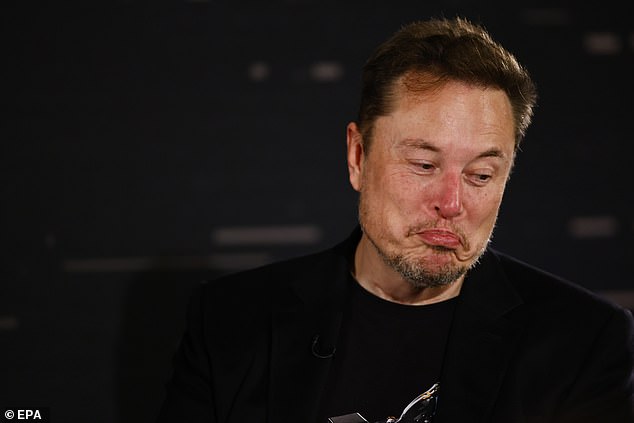
Last year, an open letter from some SpaceX employees criticized Musk’s behavior as a “source of distraction and embarrassment.”
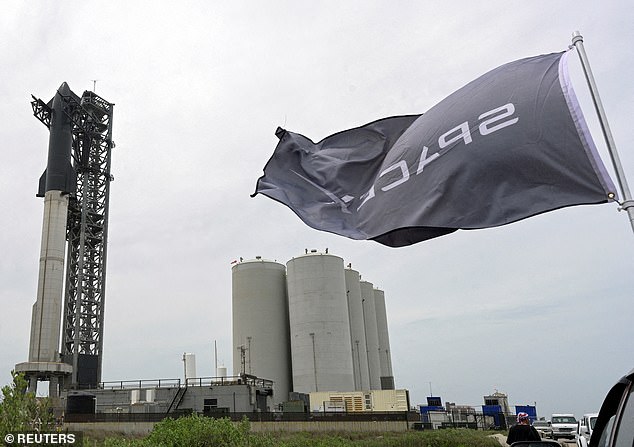
SpaceX, founded by Musk more than twenty years ago, takes the position that employees are responsible for protecting themselves, according to more than a dozen current and former employees, including a former senior executive.
Another serious injury occurred in January 2022 after a series of safety failures at SpaceX, according to eight former SpaceX employees familiar with the accident.
In that case, during testing of a Raptor V2 rocket engine, a part flew off, fracturing employee Francisco Cabada’s skull and leaving him in a coma.
Senior managers at the Hawthorne, California site had been repeatedly warned of the dangers of rushing engine development, along with inadequate staff training and component testing.
The part that failed and affected the worker had a fault that was discovered before testing but not fixed, two of the workers said.
Cabada’s wife said the company ignored the family’s attempts to find out why he was not protected.
“It would have been nice to get a call from Elon Musk,” said Ydy Cabada. “But I think employees are just disposable to them.”
Current and former employees said such injuries reflect a chaotic workplace where often undertrained and overtired staff routinely skipped basic safety procedures as they rushed to meet Musk’s aggressive deadlines for space missions.
SpaceX, founded by Musk more than twenty years ago, takes the position that employees are responsible for protecting themselves, according to more than a dozen current and former employees, including a former senior executive.
The lax safety culture, more than a dozen current and former employees said, stems in part from Musk’s disdain for perceived bureaucracy and the belief within SpaceX that it is leading an urgent quest to create a sanctuary in space for a dying Earth .
“Elon’s concept that SpaceX is on this mission to get to Mars as quickly as possible and save humanity permeates every part of the company,” said Tom Moline, a former senior aerospace engineer at SpaceX who was fired after filing complaints the workplace had expressed.
“The company justifies putting aside anything that could get in the way of achieving that goal, including employee safety.”
SpaceX’s poor safety record underlines the dangers of working in the lightly regulated and fast-growing U.S. space industry.
SpaceX has made major breakthroughs. It was the first private company to send humans into orbit.
The Starlink unit is now the world’s largest satellite operator. Competitors, including Jeff Bezos’ Blue Origin, have struggled to keep pace with SpaceX’s reusable rockets, which has driven down launch costs.
Some SpaceX engineers say they enjoy working with creative colleagues in an environment with little bureaucracy.
The injury rate at the company’s manufacturing and launch facility near Brownsville, Texas, was 4.8 injuries or illnesses per 100 employees in 2022 – six times higher than the aerospace industry average of 0.8.
The missile testing facility in McGregor, Texas, where LeBlanc died had a score of 2.7, more than three times the average.
The rate at the Hawthorne, California, manufacturing facility was more than double the average: 1.8 injuries per 100 workers.
The company’s Redmond, Washington, facility had a rating of 0.8, the same as the industry average.
